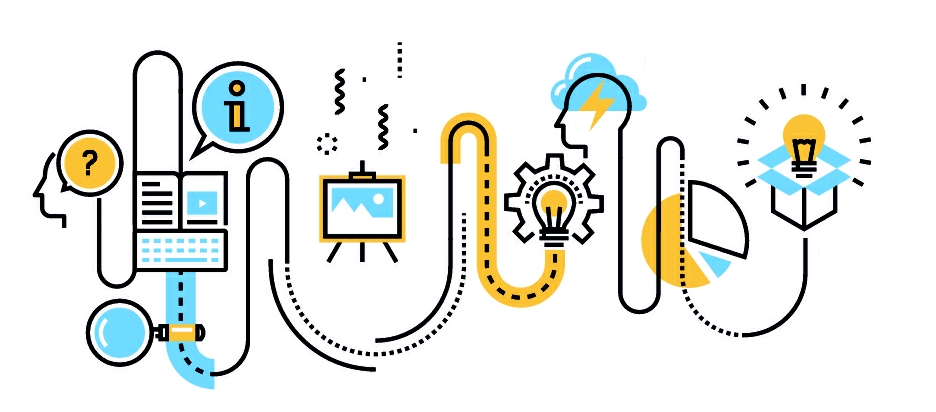Design team meeting
Contents |
[edit] Introduction
Design is a process of creating a solution to a brief and then preparing instructions allowing that solution to be constructed. Design is an iterative process, where, at each iteration, there are inputs, there is a design process and then there are outputs.
Building design is typically multi-disciplinary, involving a number of different designers, such as architects, engineers and so on, working together to create a single, holistic solution. Design teams typically start as a relatively small group, but as the design progresses, there is an ever-greater need for specialist input, and so design teams can develop to become large and complex. This is increasingly the case given the complexity of the supply chain in the modern construction industry.
It is important therefore that design teams are properly organised and coordinated so it is possible to integrate designs prepared by different members of the team to create a single set of unified information. This process of organisation and co-ordination will generally include the need for regular design team meetings.
[edit] Organisation
Design team meetings are typically coordinated by the lead designer, if one has been appointed, and may include all, or part of the design team. Sub meetings may also be organised to deal with specific aspects of the design, such as the structure, building services and so on.
Design team meetings will generally be restricted to those issues specifically to do with the developing design, and will only be attended by members of the design team. Other issues are better dealt with at wider, project team or progress meetings which might also involve project managers, the client or their representatives and so on.
Depending on the stage of the project, the number of attendees and the issues that need to be considered, design team meetings can be very structured, or they can be more creative. In either case, it is important that they are properly organised, with an agenda sent out well in advance so that participants know what will be expected from them, and that they are minuted so that any actions or decisions are captured and can be followed up. They should be scheduled so that appropriate decisions can be made and work coordinated to meet the project programme.
There may be outputs from design team meetings, such as reports to the lead consultant, project manager or client, requests for information, requests for approvals, instructions to contractors and so on. Other parties may also have to be consulted regarding the progress of the design, such as users of the building, neighbours, the local planning authority, the building control body and so on.
[edit] Agenda
Very broadly, depending on the stage of development of a project and the issues that need to be considered, an agenda for a design team meeting might include:
Agreement of the minutes of previous meetings.
Organisation:
- Appointments and personnel.
- Roles and responsibilities.
- Communications and reporting procedures.
- Standard methods and procedures for drawings, computer aided design or building information modelling.
- Programme and progress.
Design development:
- Client's requirements.
- Development of the brief.
- Site information, surveys and constraints.
- Feedback from consultations.
- Reports from designers.
- Design options and issues.
- Specific technical issues.
- Outstanding issues.
- The need for additional information or studies.
- Coordination issues.
- Reporting.
- Next steps.
Approvals:
- Planning permission.
- Building Regulations.
- Funders, insurers and so on.
- Legal issues.
Any other business.
Date of next meeting.
[edit] Related articles on Designing Buildings Wiki
- Appointing consultants.
- Collaborative practices.
- Consultant team start-up meeting.
- Design co-ordination.
- Design management plan.
- Design management.
- Design manager.
- Design methodology.
- Design responsibility matrix.
- Design review.
- Design team.
- Information manager.
- Lead designer.
- Specialist contractors start-up meeting.
- Team behavioural roles.
- Team management.
Featured articles and news
Latest Build UK Building Safety Regime explainer published
Key elements in one short, now updated document.
UKGBC launch the UK Climate Resilience Roadmap
First guidance of its kind on direct climate impacts for the built environment and how it can adapt.
CLC Health, Safety and Wellbeing Strategy 2025
Launched by the Minister for Industry to look at fatalities on site, improving mental health and other issues.
One of the most impressive Victorian architects. Book review.
Common Assessment Standard now with building safety
New CAS update now includes mandatory building safety questions.
RTPI leader to become new CIOB Chief Executive Officer
Dr Victoria Hills MRTPI, FICE to take over after Caroline Gumble’s departure.
Social and affordable housing, a long term plan for delivery
The “Delivering a Decade of Renewal for Social and Affordable Housing” strategy sets out future path.
A change to adoptive architecture
Effects of global weather warming on architectural detailing, material choice and human interaction.
The proposed publicly owned and backed subsidiary of Homes England, to facilitate new homes.
How big is the problem and what can we do to mitigate the effects?
Overheating guidance and tools for building designers
A number of cool guides to help with the heat.
The UK's Modern Industrial Strategy: A 10 year plan
Previous consultation criticism, current key elements and general support with some persisting reservations.
Building Safety Regulator reforms
New roles, new staff and a new fast track service pave the way for a single construction regulator.
Architectural Technologist CPDs and Communications
CIAT CPD… and how you can do it!
Cooling centres and cool spaces
Managing extreme heat in cities by directing the public to places for heat stress relief and water sources.
Winter gardens: A brief history and warm variations
Extending the season with glass in different forms and terms.
Restoring Great Yarmouth's Winter Gardens
Transforming one of the least sustainable constructions imaginable.























